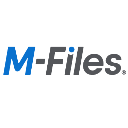The Best Document Collaboration Tools for Business Productivity & Efficient Teamwork
Document collaboration tools are vital in today's fast-paced business world, enabling seamless teamwork, communication, and productivity. They offer real-time editing, version control, file sharing, and more for efficient collaboration regardless of location.
This article explores various types of these tools, their essential features, compares top options in 2023, and discusses their positive impact on business productivity.
The rise of remote and distributed teams has further emphasized the importance of these tools as traditional methods like email attachments and shared drives prove inefficient for today's dynamic business environment. Let's dive in!
What Are the 3 Different Types of Document Collaboration Tools?
Document collaboration tools come in various forms, catering to diverse needs and preferences. Some of the popular types include:
| Cloud-Based Collaboration Tools | These tools operate on the cloud, allowing teams to access, edit, and share documents from any device with an internet connection. The cloud-based approach eliminates the need for manual file transfers, reduces the risk of version control issues, and ensures that teams always work with the latest version of a document. Examples of popular cloud-based collaboration tools include Google Workspace (formerly G Suite), Microsoft 365, and Dropbox Paper. |
| Project Management Collaboration Tools | Integrated within project management platforms, these tools enable teams to collaborate on specific tasks, set deadlines, and monitor progress collectively. Project management collaboration tools provide a centralized space for project-related documents, discussions, and updates, fostering better coordination among team members. Well-known examples of project management collaboration tools include Trello, Asana, and Jira. |
| Real-Time Communication Platforms | While not exclusively document collaboration tools, these platforms, such as Slack and Microsoft Teams, include features that facilitate document sharing, commenting, and editing during conversations. Real-time communication platforms promote instant feedback and allow team members to collaborate on documents seamlessly while discussing related matters in real-time. |
Each type of document collaboration tool offers unique advantages, and the choice of the tool depends on the specific requirements and workflows of a company.
11 Essential Features in Document Collaboration Tools
To be truly effective, document collaboration tools should offer a range of essential features that foster seamless teamwork. Let's explore some of these features in detail:
Real-Time Collaboration
One of the core aspects of document collaboration tools is real-time editing. Multiple team members can work on the same document simultaneously, seeing changes instantly, which promotes efficiency and reduces delays. This feature is particularly valuable in situations where immediate collaboration is essential, such as during virtual meetings or when teams are working on time-sensitive projects.
Version Control
Version control ensures that the team maintains access to previous iterations of a document. This feature prevents the loss of important information and allows users to revert to earlier versions if necessary. Having a comprehensive version history helps teams track changes made by different users, providing valuable insights into the document's evolution over time.
Comments and Annotations
Allowing users to comment and annotate on documents fosters effective communication and provides a platform for feedback and suggestions. Comments enable team members to discuss specific sections, raise questions, and provide clarifications, enhancing collaboration and reducing the need for separate communication channels.
Access Controls
Robust access controls ensure that only authorized personnel can access and modify sensitive documents, safeguarding critical data from unauthorized individuals. Administrators can set permissions and restrictions based on user roles, ensuring that confidential information is accessible only to those who require it.
Security
With cyber threats on the rise, security is a top priority for businesses. Document collaboration tools must employ encryption, secure authentication methods, and other security measures to protect valuable information from unauthorized access and potential data breaches. Companies must choose tools that comply with industry standards and regulations to ensure the safety of their data.
Integration Capabilities
Integration with other essential tools such as project management software, cloud storage services, and communication platforms streamlines workflows and enhances productivity. Document collaboration tools that can seamlessly connect with existing software systems reduce the need for manual data transfers and facilitate a cohesive work environment.
Offline Access
While cloud-based collaboration is popular, offline access is crucial for situations with limited or no internet connectivity. Document collaboration tools that allow users to work on documents offline and sync changes when they are back online ensure uninterrupted productivity, especially in regions with unreliable internet connectivity.
File Sharing and Storage
Ample file storage and efficient sharing capabilities are fundamental features that ensure easy accessibility and smooth sharing of documents. The ability to organize files in a structured manner and quickly share them with team members or external stakeholders promotes efficient collaboration and knowledge sharing.
Search Functionality
As the volume of documents grows, efficient search functionality becomes essential for quickly locating specific files and information. Advanced search capabilities, including keyword search, filters, and sorting options, enable users to find relevant documents within seconds, saving time and effort.
User-Friendly Interface
An intuitive and user-friendly interface is vital to encourage widespread adoption of the tool across the organization. Document collaboration tools with intuitive interfaces require minimal training and enable teams to start collaborating seamlessly without significant onboarding hurdles.
Mobile Access
In today's mobile-driven world, the availability of mobile apps or responsive web interfaces ensures that teams can collaborate on the go, regardless of their physical location. Mobile access enables remote workers, sales representatives, and executives to stay connected and contribute to projects, even while away from their desks.
The success of a document collaboration tool depends not only on the presence of these features but also on their effectiveness and ease of use. Companies must carefully evaluate the capabilities of different tools and select the one that best aligns with their specific needs.
Comparing Top Document Collaboration Tools in 2023
In 2023, several document collaboration tools gained prominence for their innovative features and capabilities. Let's take a closer look at three top contenders:
1 of 4
 DocuWare |  Google Workspace |  M-Files |  Notion |
|---|---|---|---|
| For companies with 2 to 5000 employees | For all companies | For companies with more than 50 employees | For all companies |
| See software | See software | See software | See software |
| Learn more about DocuWare | Learn more about Google Workspace | Learn more about M-Files | Learn more about Notion |
Google Workspace: Features, Pricing
Google Workspace stands out as a comprehensive solution for document collaboration and management, revolutionizing team collaboration and productivity by seamlessly integrating essential tools into one suite. Key components such as Google Drive for file storage, Google Docs for document creation and editing, and Google Meet for video conferencing are central to its offering. This suite is especially designed to facilitate efficient and seamless collaboration, enabling teams to communicate and work together effectively, irrespective of their geographical locations.
The user-friendly interface of Google Workspace, combined with robust security measures, ensures not only the protection of data but also a smooth collaborative experience. It is particularly adept at fostering real-time collaboration, allowing multiple users to simultaneously work on and edit documents. This feature is invaluable for teams that require dynamic and agile document management and collaborative workflows.
Google Workspace is known for its scalability, making it a versatile choice for businesses of various sizes and industries. It caters to the specific needs of each organization, from small startups to large enterprises, providing a range of features and storage options.
Regarding pricing, Google Workspace offers several tiered plans, each tailored to different business requirements. Each plan provides a unique set of features and storage capacities, enabling businesses to choose the most suitable option for their specific needs. Importantly, Google Workspace also includes a free plan known as the Essentials Starter, which offers key collaboration tools like Google Drive, Docs, Sheets, and Slides, as well as Google Chat and Google Meet, with up to 15 GB of storage.

Google Workspace
M-Files: Features, Pricing
M-Files offers a powerful metadata-driven document management platform, empowering knowledge workers to find the right information instantly, automate processes, and ensure information control. This results in superior customer experiences, higher-quality work, and reduced risk, providing businesses with a competitive advantage and substantial ROI. With M-Files, critical information can be accessed swiftly, saving time and boosting productivity by 40%, leading to a remarkable 270% ROI.
The solution caters to various industries, delivering tailored solutions for specific needs. Recognised by Gartner Peer Insights™ as a Strong Performer in the Content Services Platforms report, M-Files maintains a high customer satisfaction rate, with 95% of respondents recommending the platform. The pricing details are available on demand.
Organisations can schedule a demo to witness advanced search, automated workflows, intuitive user interfaces, and seamless integrations with existing applications and file systems. The M-Files Resource Hub offers additional expertise and actionable takeaways for businesses seeking efficient document management solutions.

M-Files
Notion: Features, Pricing
Notion offers a comprehensive tool for companies to organize their work and life. Teams can try it for free. Trusted by teams at Curology, it has various pricing tiers and features.
- Free Plan: Organize work & life, unlimited blocks for individuals, limited block trial for teams, collaborative workspace, integration with Slack & GitHub, basic page analytics, 7-day page history, invite 10 guests.
- Plus Plan ($8/user/month billed annually, $10 billed monthly): Everything in Free, plus unlimited blocks for teams, unlimited file uploads, 30-day page history, invite 100 guests.
- Business Plan ($15/user/month billed annually, $18 billed monthly): Everything in Plus, and SAML SSO, private teamspaces, bulk PDF export, advanced page analytics, 90-day page history, invite 250 guests.
- Enterprise Plan: Advanced controls & support for the entire organization, including user provisioning (SCIM), advanced security & controls, audit log, dedicated success manager (100+ seats), workspace analytics, unlimited page history, custom guest limit.
Additionally, there's an optional AI add-on called Notion AI available for $8/member/month on paid plans, enabling faster work and better content generation.

Notion
DocuWare: Features, Pricing
DocuWare's invoice processing solution, integrated within the DocuWare Cloud platform, offers a robust set of features for streamlined workflow management. The solution includes intelligent data capture with AI-based indexing, mobile upload capabilities, and seamless integration with various applications, such as Microsoft Outlook, Teams, and SAP. Workflow automation, task control, and versioning ensure efficient document processing and collaboration. Accessible on any device, DocuWare enables flexible search and advanced permissions for secure data access. Additionally, the solution supports electronic signatures for legally binding documents.
Pricing for the solution is based on DocuWare Cloud tiers, with options ranging from DocuWare Cloud 4 (4 named client users with 20 GB storage) to DocuWare Cloud 100 (100 named client users with 1,000 GB storage). The solution is included within the DocuWare Cloud pricing, and the final cost depends on the selected tier, contract type, and any required professional services for deployment. For specific pricing details, organizations are advised to contact DocuWare directly.

DocuWare
Choosing the Right Document Collaboration Tool for Your Needs
Selecting the most suitable document collaboration tool requires careful consideration of the organization's specific requirements and objectives. To make an informed decision:
| Assess Your Needs | Identify the key features and functionalities your team requires, such as real-time collaboration, security, integration capabilities, and mobile access. Consider the size of your team, the nature of your projects, and the level of data sensitivity involved. |
| Budget Considerations | Evaluate the pricing structures of different tools and choose one that aligns with your budget while meeting essential requirements. It's essential to strike a balance between cost and the value provided by the tool. |
| User-Friendly Interface | Opt for a tool with an intuitive interface to ensure ease of adoption and minimize the learning curve for employees. A user-friendly tool encourages higher engagement and increases the likelihood of successful implementation. |
| Integration Compatibility | Consider tools that integrate smoothly with your existing software ecosystem to avoid disruptions to established workflows. Seamless integration enhances efficiency and prevents the need for duplicate data entry. |
| Security and Compliance | Prioritize tools that adhere to industry-standard security protocols and comply with relevant data protection regulations. A strong focus on security is crucial, especially when dealing with sensitive information. |
| Scalability | Anticipate future growth and consider whether the chosen document collaboration tool can scale with your organization's evolving needs. A scalable solution can accommodate a growing workforce and increasing document volumes without significant disruptions. |
The Impact of Document Collaboration Tools on Business Productivity
Implementing an effective document collaboration tool can have a profound impact on business productivity:
Enhanced Efficiency: Real-time collaboration and streamlined document management reduce delays and enable teams to work together seamlessly, accelerating project completion. Teams can collaborate on documents in real-time, reducing the need for back-and-forth communications and ensuring rapid decision-making.
Improved Communication: Comments and annotations foster effective communication, encouraging valuable feedback and minimizing misunderstandings. Collaborators can provide contextual feedback directly within the document, making it easy for others to understand and act on suggestions.
Version Control and Data Integrity: Document versioning ensures that the team always works with the latest information while maintaining access to historical data. This feature prevents conflicting edits and accidental data loss, ensuring data integrity and accuracy.
Remote Work Facilitation: With the rise of remote work, collaboration tools provide the infrastructure for teams to collaborate effectively, regardless of their location. Remote teams can access and edit documents from anywhere, fostering a flexible and productive work environment.
Centralized Information: Having all documents in a centralized location eliminates the need to search through various systems, saving time and improving organization. Team members can quickly locate the documents they need without having to navigate through multiple folders or systems.
Collaboration Transparency: Document collaboration tools offer transparency, enabling managers to monitor progress, identify bottlenecks, and allocate resources efficiently. Project managers can track document edits, view comments, and gauge overall collaboration activity to ensure project timelines and deliverables are on track.
Conclusion
Document collaboration tools have become indispensable assets for businesses of all sizes, revolutionizing the way teams work together. From real-time collaboration and version control to security and mobile access, these tools offer a myriad of features that enhance productivity and streamline workflows.
By carefully selecting the right tool for your needs and leveraging capabilities, companies can empower their teams to achieve higher levels of efficiency and collaboration, propelling them towards success in the dynamic and competitive business landscape of 2023 and beyond.
The adoption of document collaboration tools is not just a technological upgrade; it represents a fundamental shift in how organizations approach teamwork, communication, and data management. As businesses continue to embrace digital transformation, document collaboration tools will continue to play a pivotal role in driving innovation, efficiency, and success in the workplace.